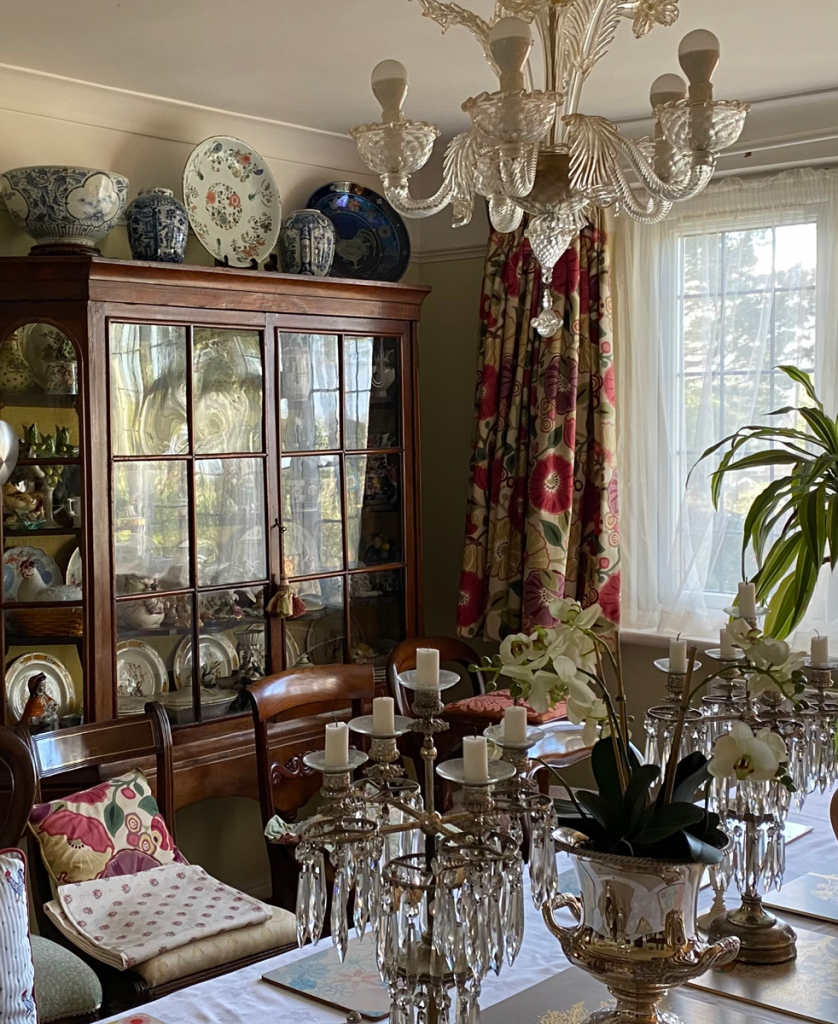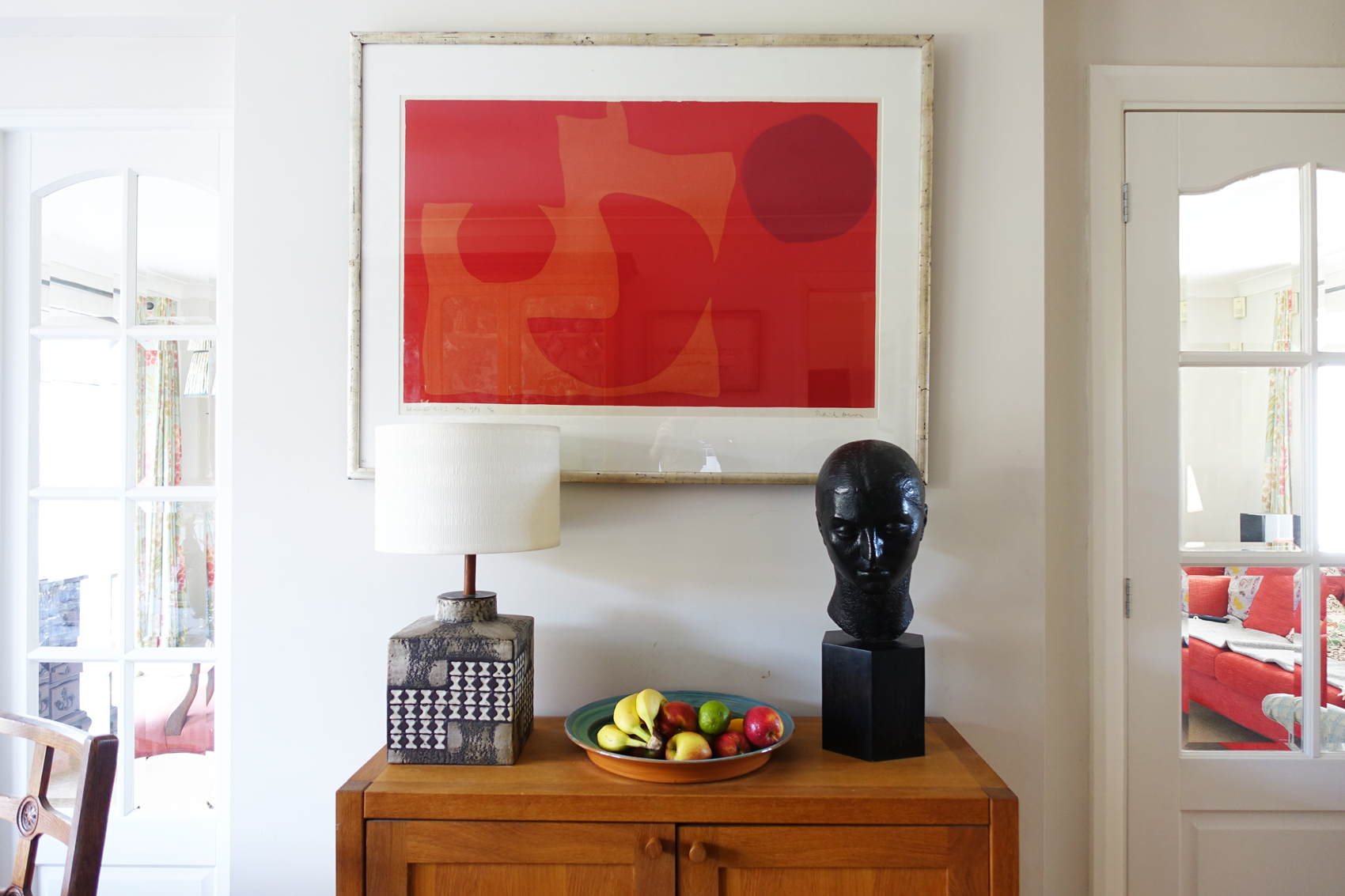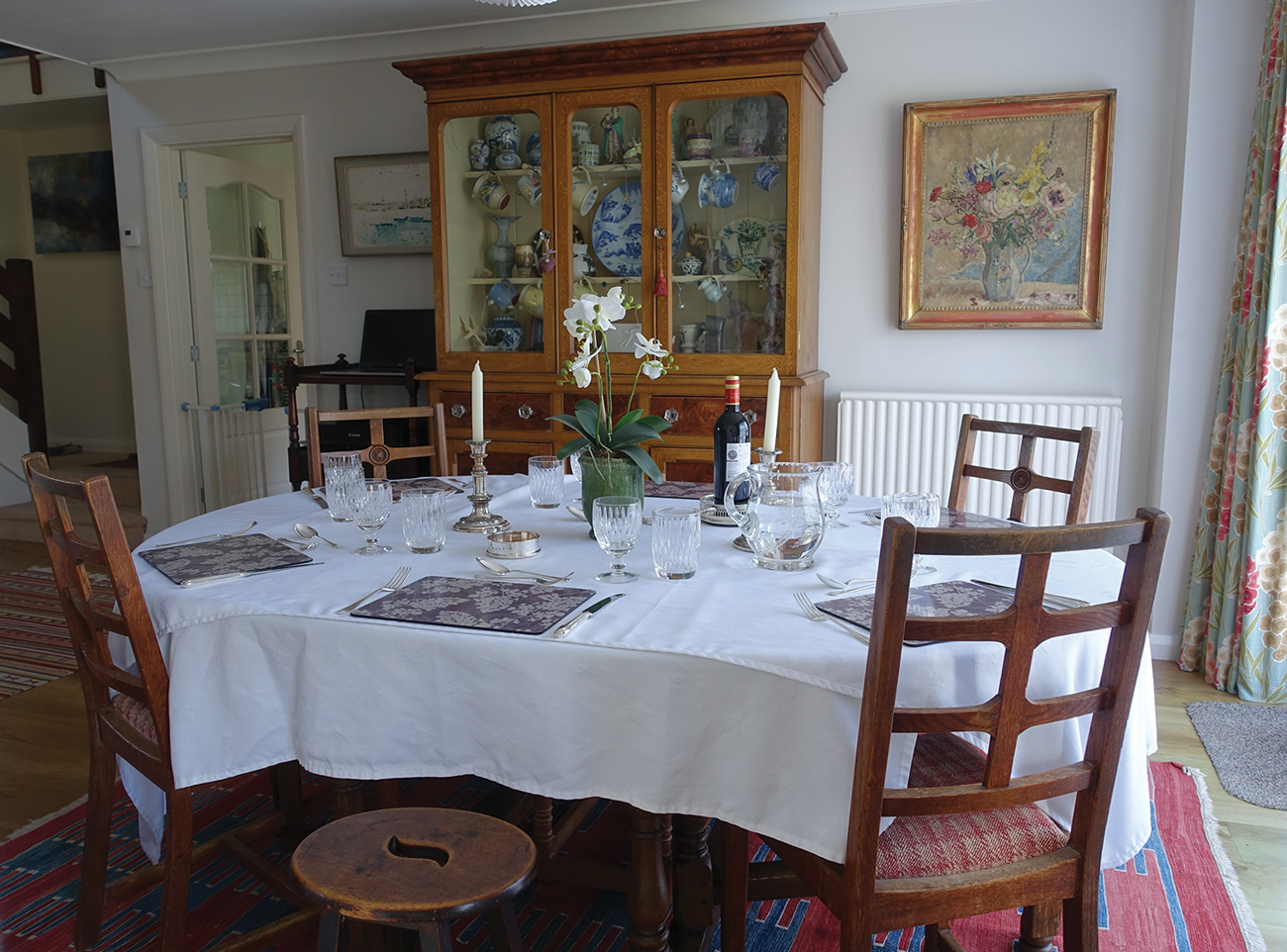
I have to own that I much prefer a rich layered interior in the English Country House Taste to the austerity of modern minimalism. There is such a joy in an eclectic mixture of objects which speak of our place in the procession of history and of our own stories – objects which reflect the patchwork quilt of our lives.
The Sussex Dining Room you see here gives voice to that English Country House Taste. The first spring sunlight reflects on the Dutch display cabinet’s glass panels as it gives life to the silver-plated, flower filled wine-cooler of Campana Urn form and the pair of candelabrum with their glass spear drops.
A Chinese blue and white bowl and a polychrome enamel dish decorated with scattered flowers rest on top of the Dutch walnut display cabinet. Both date from the mid-17th/early 18th century Kangxi period when the Dutch and the British East India Company competed for trade in the Far East. As a curator at the Rijksmuseum in Amsterdam once remarked to me with a wry grin “The Dutch and the English – keeping it sharp”. The Chinese pieces are flanked by two earthenware Dutch Delft tin glazed blue and white vases.
There is a delight to a display cabinet. Curated objects jostle for attention and compliment one another. The alcove cabinet with its crisp painted white gloss and Regency blue interior frames the eclectic mixture of porcelain: figures in the 18th century taste, a Royal Crown Derby vase, a Dresden bottle vase decorated with summer flowers and a Chinese Qianlong period famille rose teapot with a silver handle.
There is nothing new in these scenes except the artistic composition of furniture and objects arranged like pieces in a painting.
Here is minimalism at its height. Not the austerity of throwaway contemporary minimalism driven by fashion, but a minimalist approach to how we walk in the world.
Everything you see in this room is personal and beautiful. The quality of manufacture and design honours the finite and precious materials from which these things were made. They have already delighted many generations and they will continue to delight and serve generations to come too.
These pieces and the interiors they create are not bland or homogenous but unique, allowing us to give expression to who we are. The comfortable, inclusive and timeless taste of the English country house is once again on the rise.
Perhaps, rather than being herded into uniformity, we might embrace a new minimalism which English Country House Taste gives expression to. It allows us to speak of who we are; embracing antique and vintage pieces to create generous, gathering homes whilst treading lightly on the world.

